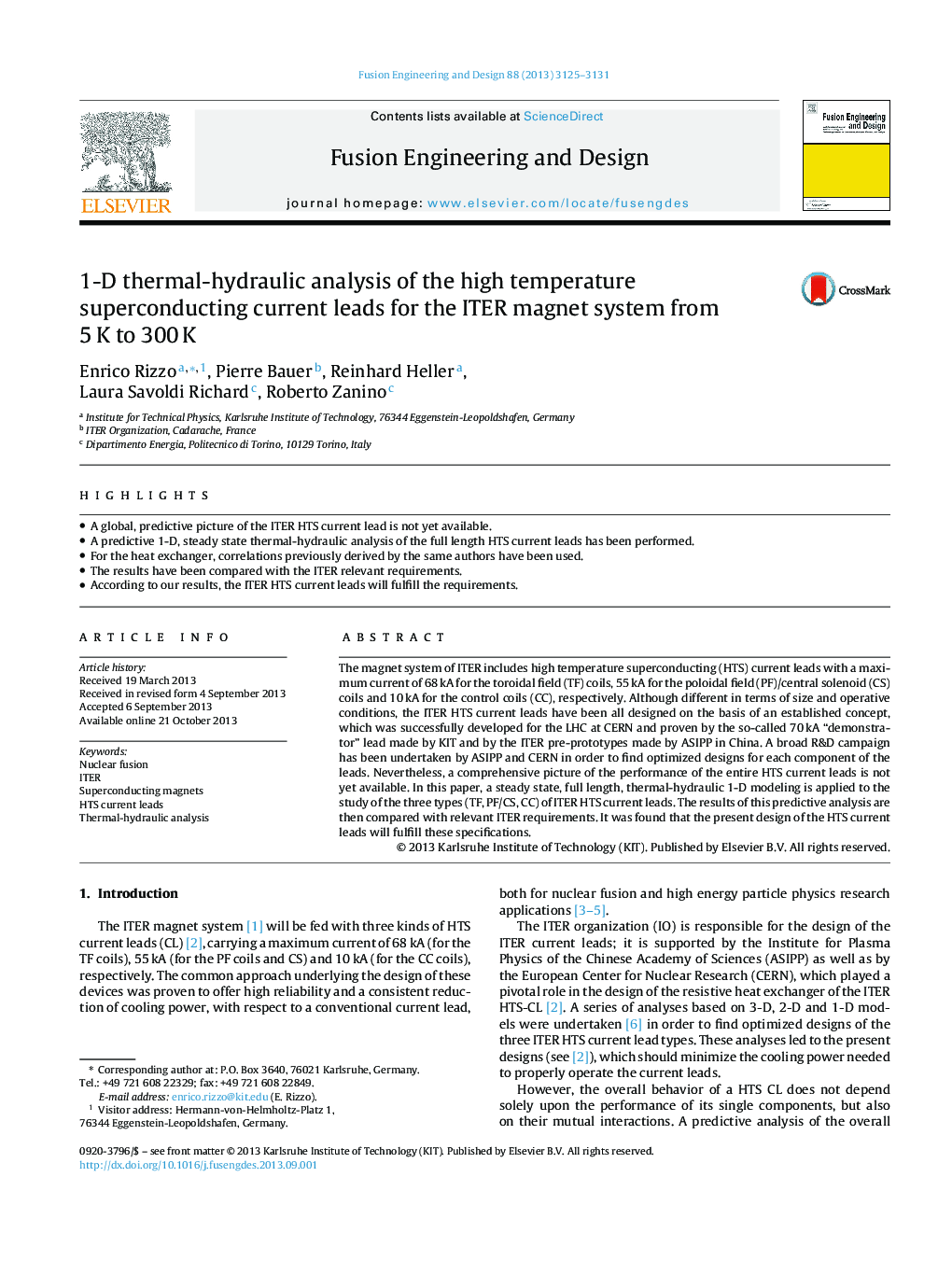| Article ID | Journal | Published Year | Pages | File Type |
|---|---|---|---|---|
| 271122 | Fusion Engineering and Design | 2013 | 7 Pages |
•A global, predictive picture of the ITER HTS current lead is not yet available.•A predictive 1-D, steady state thermal-hydraulic analysis of the full length HTS current leads has been performed.•For the heat exchanger, correlations previously derived by the same authors have been used.•The results have been compared with the ITER relevant requirements.•According to our results, the ITER HTS current leads will fulfill the requirements.
The magnet system of ITER includes high temperature superconducting (HTS) current leads with a maximum current of 68 kA for the toroidal field (TF) coils, 55 kA for the poloidal field (PF)/central solenoid (CS) coils and 10 kA for the control coils (CC), respectively. Although different in terms of size and operative conditions, the ITER HTS current leads have been all designed on the basis of an established concept, which was successfully developed for the LHC at CERN and proven by the so-called 70 kA “demonstrator” lead made by KIT and by the ITER pre-prototypes made by ASIPP in China. A broad R&D campaign has been undertaken by ASIPP and CERN in order to find optimized designs for each component of the leads. Nevertheless, a comprehensive picture of the performance of the entire HTS current leads is not yet available. In this paper, a steady state, full length, thermal-hydraulic 1-D modeling is applied to the study of the three types (TF, PF/CS, CC) of ITER HTS current leads. The results of this predictive analysis are then compared with relevant ITER requirements. It was found that the present design of the HTS current leads will fulfill these specifications.
